Garden Design Fort Worth
Garden Design in Fort Worth
Garden design is way more involved than most people think—it's not just planting some tomatoes and hoping for the best. Fort Worth's climate makes gardening tricky—brutal summers that fry tender plants, unpredictable spring freezes killing early plantings, clay soil that either drowns roots or bakes into concrete, pests that show up right when everything's looking good. We design gardens that actually work here—vegetable gardens producing food despite the heat, herb gardens thriving near your kitchen, cutting flower gardens providing blooms for arrangements, specialty gardens serving specific purposes beyond just looking pretty. The difference between a garden that produces versus one that struggles comes down to proper design—right location for sun exposure, soil preparation overcoming our clay, irrigation delivering consistent moisture, plant selection matching Fort Worth's challenging conditions, timing coordinated with our growing seasons. We've designed gardens all over Fort Worth—small raised bed setups in Fairmount backyards, extensive kitchen gardens for families in Aledo wanting serious food production, cutting gardens in Tanglewood providing flowers year-round, herb gardens integrated into landscapes throughout the area. Whether you're new to gardening or experienced but frustrated with Fort Worth's challenges, proper garden design makes the difference between harvests you're proud of and disappointing failures leaving you wondering why nothing grows right.

Understanding Fort Worth's Garden Challenges and Opportunities

Fort Worth sits in USDA hardiness zone 8a—means specific limitations and opportunities for gardening. Our last spring freeze typically happens mid-March, first fall freeze usually mid-November—gives us roughly eight months frost-free growing. Sounds great until you factor in July and August when temperatures hit 100+ for weeks straight and most vegetables just quit producing or outright die.
Two distinct growing seasons work better than trying to garden year-round. Spring season runs March through June—planting warm season crops after freeze danger passes, harvesting before extreme heat arrives. Fall season September through November—planting cool season crops as temperatures moderate, harvesting through fall and sometimes into winter. Trying to garden through July and August is mostly frustrating—heat-tolerant varieties survive but production drops significantly, water requirements skyrocket, pest pressure intensifies.
Clay soil dominates Fort Worth—heavy texture, poor drainage, compaction issues, difficulty for root penetration. Gardening directly in native clay rarely succeeds—roots suffocate from poor aeration, drainage problems cause rot, working wet clay creates brick-like hardpan. Successful Fort Worth gardens require serious soil amendment or raised beds bypassing clay entirely.
Water requirements during summer are intense—gardens need consistent moisture, clay soil either stays too wet or dries completely, hand-watering becomes full-time job without irrigation. Drip irrigation systems are practically mandatory for summer gardens—delivering consistent moisture, reducing disease pressure from overhead watering, conserving water compared to sprinklers.
Sun exposure determines what grows successfully—minimum six hours daily for most vegetables and herbs, eight hours better for heavy producers like tomatoes and peppers, too much afternoon sun without shade can stress plants during peak summer. We position gardens carefully—adequate sun for production, afternoon shade during brutal summer months when possible, protection from strong west winds.
Pest pressure includes spider mites during hot dry periods, aphids on new growth, squash vine borers killing squash and cucumbers, tomato hornworms, grasshoppers during drought years. Successful gardens incorporate pest management strategies from design phase—companion planting, beneficial insect habitat, physical barriers, varieties with disease resistance.
Vegetable Garden Design for Fort Worth Production
Location selection prioritizes sun exposure and convenience—minimum six hours daily sun, proximity to water source for irrigation, accessibility from kitchen for frequent harvesting, level or gently sloped ground. Back corners of yards get ignored—gardens near houses get tended regularly, harvested promptly, maintained consistently. We position vegetable gardens where they'll actually get used—convenient locations, visible from main living areas, easy access for daily attention.
Raised beds solve Fort Worth clay soil problems—building up quality growing medium above native soil, dramatically improved drainage, warmer soil in spring for earlier planting, easier access reducing bending and kneeling. We design raised beds 8 to 12 inches tall minimum—18 to 24 inches ideal for serious production and easier access. Four feet wide maximum allows reaching center from either side without stepping in beds—compacting soil and damaging plants.
Bed layout considers sun exposure, access, crop rotation, companion planting. We arrange beds north-south orientation when possible—equal sun exposure both sides, tall crops on north end avoiding shading shorter plants. Pathways between beds minimum two feet wide—wheelbarrow access, comfortable working space, room for harvest baskets and tools.
Soil preparation starts with quality mix—compost, peat moss or coconut coir, vermiculite or perlite creating loose well-draining growing medium. Native clay amended heavily for in-ground gardens—adding 4 to 6 inches compost and expanded shale tilled deeply, improving drainage and root penetration. Soil testing determines pH and nutrient needs—adjusting before planting rather than correcting problems later.
Irrigation design for vegetable gardens uses drip systems—consistent moisture critical for production, overhead watering promotes disease, drip delivers water efficiently to root zones. We design drip systems with emitters spaced for vegetable needs—closer spacing for greens and herbs, wider for larger plants like tomatoes and peppers, zones allowing different watering schedules for various crops.
Vertical growing structures maximize space—trellises for pole beans and peas, cages and stakes for tomatoes, arbors for cucumbers and melons. We incorporate vertical structures in designs—proper placement for sun exposure, adequate spacing for air circulation, sturdy construction supporting heavy fruiting plants during summer storms.
Season extension features include shade cloth structures for summer heat protection, row covers for frost protection spring and fall, cold frames extending cool season growing. We design gardens with season extension in mind—posts supporting shade cloth during peak summer, accessible placement for row cover installation during freeze warnings, cold frame positioning for winter sun exposure.
Herb Garden Design for Kitchen Access
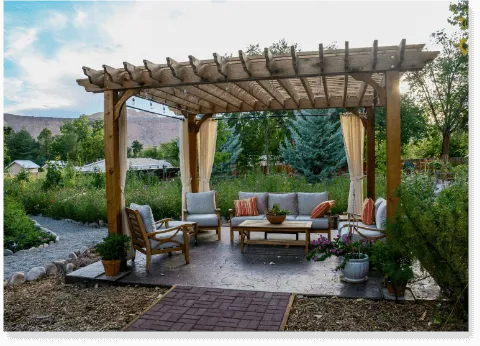
Proximity to kitchen is critical—herbs used frequently in cooking need convenient access, running to back corner of yard for fresh basil gets old fast, herbs near kitchen doors get picked regularly. We position herb gardens near cooking areas—raised planters on patios, beds adjacent to kitchen entries, container gardens on decks, anywhere providing easy quick access during meal prep.
Perennial versus annual herbs require different design approaches. Perennial herbs like rosemary, sage, thyme, oregano establish in permanent locations—multiple years of production, woody growth, specific spacing allowing mature sizes. Annual herbs like basil, cilantro, dill plant fresh each season—different locations each year, succession plantings for continuous harvest, flexible placement.
Sun exposure requirements vary by herb—Mediterranean herbs like rosemary, thyme, oregano need full sun and excellent drainage, mint and parsley tolerate partial shade, cilantro prefers cooler conditions benefiting from afternoon shade during Fort Worth summers. We group herbs by requirements—sun-loving varieties together, shade-tolerant herbs in different areas, proper matching to site conditions.
Drainage is critical for Mediterranean herbs—rosemary and thyme rot in heavy clay or overwatered conditions, raised beds or mounded soil essential, gravelly soil mix mimicking native habitat. We design herb beds with excellent drainage—raised above grade, amended soil draining freely, avoiding low spots where water collects.
Container gardens work beautifully for herbs—portability following sun or moving to protection, controlling soil quality easily, preventing aggressive spreaders like mint from taking over, bringing tender herbs indoors during occasional hard freezes. We design container herb gardens for patios and decks—grouped by water needs, attractive arrangements, convenient access from kitchens.
Harvest accessibility influences design—frequently picked herbs like basil and cilantro positioned front and center, occasional-use herbs like bay or lavender placed further back, low-growing thyme and oregano in raised beds avoiding bending constantly. We arrange herbs ergonomically—easy comfortable harvesting, frequently used varieties most accessible, mature sizes preventing crowding.
Integration with ornamental landscapes incorporates herbs in flower beds—rosemary as evergreen structure, sage providing texture and color, chives adding spring blooms, thyme as groundcover. Many herbs are attractive plants—we integrate into general landscaping rather than isolating in separate vegetable-style gardens, creating beauty and functionality together.
Cutting Flower Garden Design
Production focus rather than ornamental display—plants grown specifically for cutting and arrangements, planted in rows or blocks for efficient harvesting, appearance in garden less important than flower quality and quantity. We design cutting gardens differently than ornamental beds—functional layouts, easy access for cutting, succession planting areas, production maximized.
Seasonal planning ensures flowers available throughout year—cool season annuals like snapdragons and sweet peas fall through spring, warm season annuals like zinnias and sunflowers summer through fall, perennials adding structure and reliable blooms, bulbs for spring color. We design succession planting schedules—staggered sowing dates, multiple varieties with different bloom times, continuous cutting availability rather than single flush.
Fort Worth-appropriate selections focus on heat-tolerant varieties—zinnias thrive in our summers producing abundantly, cosmos handle heat and drought, sunflowers love Texas, celosia provides long-lasting color, gomphrena offers everlasting flowers. Cool season options include snapdragons, larkspur, sweet peas planted fall for spring bloom—extending cutting season beyond summer heat-lovers.
Layout typically uses rows or blocks—spacing allowing air circulation and access, efficient harvesting walking along rows, irrigation and maintenance easier in organized plantings. We design cutting gardens with functionality prioritized—four-foot-wide beds accessible from both sides, paths allowing wheelbarrow access, logical organization by height and harvest timing.
Support structures for tall flowers prevent storm damage and facilitate cutting—stakes for individual stems, horizontal netting supporting entire beds, trellises for vining varieties. We incorporate support systems in designs—installed during or shortly after planting, adequate strength for mature heavily flowering plants, facilitating straight stem production valuable for arrangements.
Irrigation maintains consistent production—flowers need reliable moisture producing quality stems and blooms, drip irrigation works well delivering water without damaging delicate flowers, consistent watering prevents stress affecting production. We design irrigation systems for cutting gardens—zones based on water needs, coverage ensuring adequate moisture during Fort Worth summers, automation reducing maintenance requirements.
Succession planting areas allow continuous production—sowing small amounts every two weeks rather than entire crop at once, staggered harvests rather than overwhelming glut followed by nothing, dedicated spaces for succession plantings. We design with succession in mind—bed areas designated for multiple plantings, logical organization preventing confusion, supporting season-long flower production.
Raised Bed Garden Construction and Design
Dimensions balance accessibility and efficiency—four feet wide maximum reaching center from either side, lengths variable based on space and preference, heights 8 to 24 inches depending on needs and budget. We design raised beds with standard four-foot width—comfortable reach, standard lumber dimensions work efficiently, maximum growing space without accessibility issues.
Materials affect longevity and aesthetics—untreated cedar naturally rot-resistant lasting 10+ years, composite lumber maintenance-free but expensive, concrete blocks economical and permanent but less attractive, galvanized metal modern aesthetic and excellent durability. We help selecting appropriate materials—balancing budget, desired aesthetics, expected longevity, garden style and home architecture.
Construction details ensure durability—corner joints secured properly, level installation preventing water pooling one end, adequate drainage in bed bottoms, structural stability supporting soil weight when full. We design structurally sound raised beds—proper joinery and fasteners, level and square construction, adequate strength for soil and moisture loads.
Soil fill requires quality ingredients—compost providing organic matter and nutrients, peat moss or coconut coir improving moisture retention, vermiculite or perlite improving drainage and aeration, blended thoroughly creating consistent growing medium. We specify soil mixes appropriate for intended crops—vegetable production needs rich fertile mix, herbs prefer leaner drainage-focused blend, adjusting recipes for plant requirements.
Base preparation underneath beds affects drainage and weed control—landscape fabric preventing weed intrusion from below, gravel layer in soggy areas improving drainage, existing grade leveled providing stable foundation. We detail base preparation—appropriate for site conditions, preventing problems, ensuring long-term performance.
Irrigation installation happens during or immediately after construction—drip lines laid on soil surface or buried shallowly, emitters spaced for crop needs, zones allowing different watering schedules, automated timers reducing maintenance. We design irrigation systems coordinating with bed layouts—adequate coverage, efficient operation, simple maintenance and adjustment.
Pathways between beds use decomposed granite, wood chips, gravel, flagstone—firm surfaces preventing muddy access, adequate width for comfortable movement and equipment, low maintenance materials. We design pathway systems—proper widths, appropriate materials for budget and aesthetics, integration with overall garden design creating cohesive attractive functional spaces.
Specialty Garden Types and Designs
Pollinator gardens support bees, butterflies, beneficial insects—native flowers providing nectar and pollen, host plants for butterfly larvae, pesticide-free management, water sources. We design pollinator gardens with Fort Worth native plants—autumn sage, gregg's mistflower, zexmenia, native milkweeds for monarchs, blooming throughout seasons providing continuous resources.
Medicinal herb gardens grow plants for teas, tinctures, natural remedies—echinacea, chamomile, lemon balm, holy basil, calendula. Require specific growing conditions, harvest timing critical for potency, processing and storage space considerations. We design medicinal gardens for serious gardeners—appropriate varieties, proper sun and soil, dedicated spaces for growing quantities needed for processing.
Children's gardens incorporate easy-growing crops, sensory plants, interactive elements, safe pest management, accessible heights. Sunflowers, cherry tomatoes, snap peas, pumpkins—crops children enjoy growing and eating. We design kid-friendly gardens—raised beds at appropriate heights, clearly defined spaces children manage themselves, fun varieties encouraging interest in gardening.
Container vegetable gardens work for patios, balconies, small spaces—mobility, controlled soil quality, accessibility, season extension moving containers for temperature control. Determinate tomatoes, peppers, herbs, lettuces, dwarf varieties work well in containers. We design container gardens—appropriate pot sizes, arrangement for sun exposure, grouping by water needs, attractive functionality.
Square foot gardening maximizes small spaces—intensive planting in grid patterns, succession planting, interplanting compatible crops, extremely organized systematic approach. We design square foot gardens—proper bed construction, grid systems, planting schedules maximizing production from limited space, ideal for smaller Fort Worth properties wanting substantial harvests.
Native Texas gardens use only plants indigenous to our region—blackland prairie species, cross timbers natives, extreme heat and drought tolerance, supporting local ecosystems. Native gardens look different than traditional vegetable gardens—wildflower meadows, prairie grasses, native vines, natural aesthetics rather than manicured rows. We design native gardens—appropriate species selection, establishment strategies, maintenance approaches supporting natural appearance.
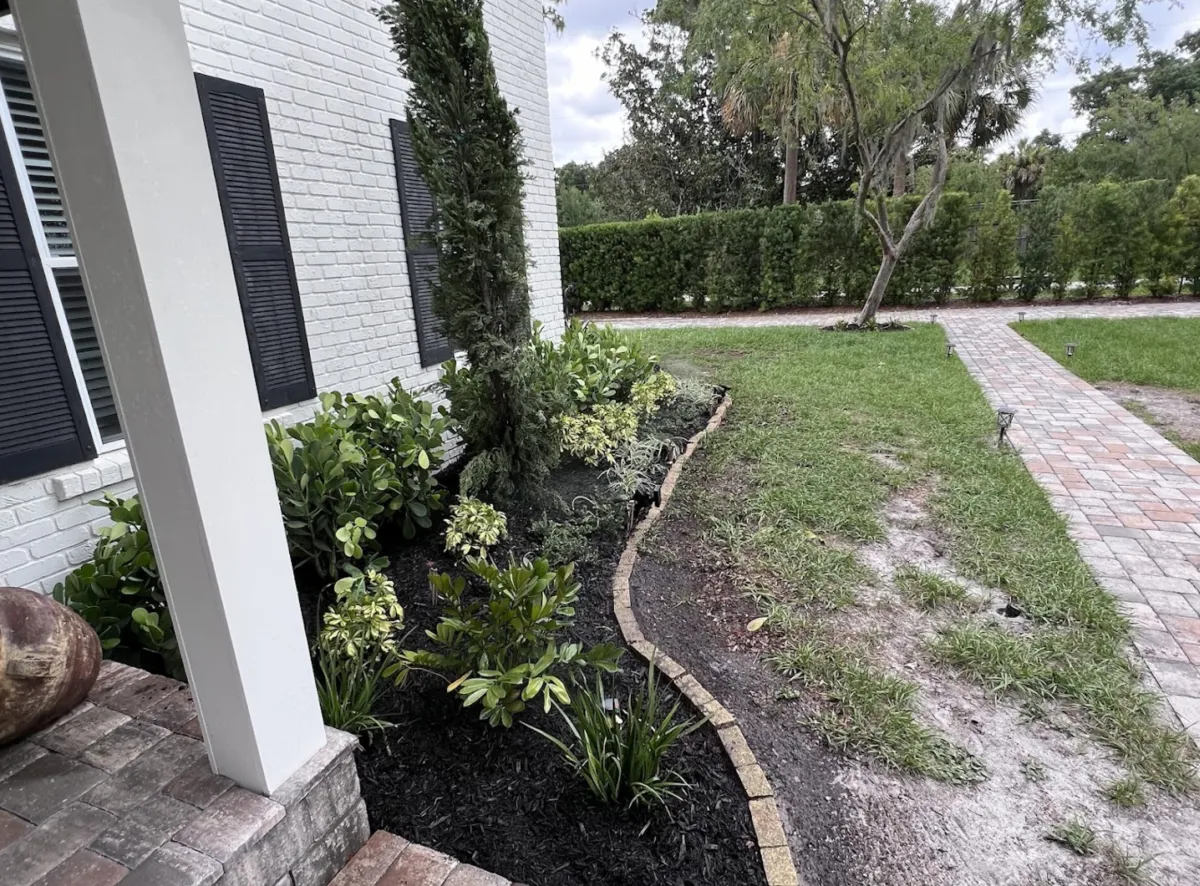

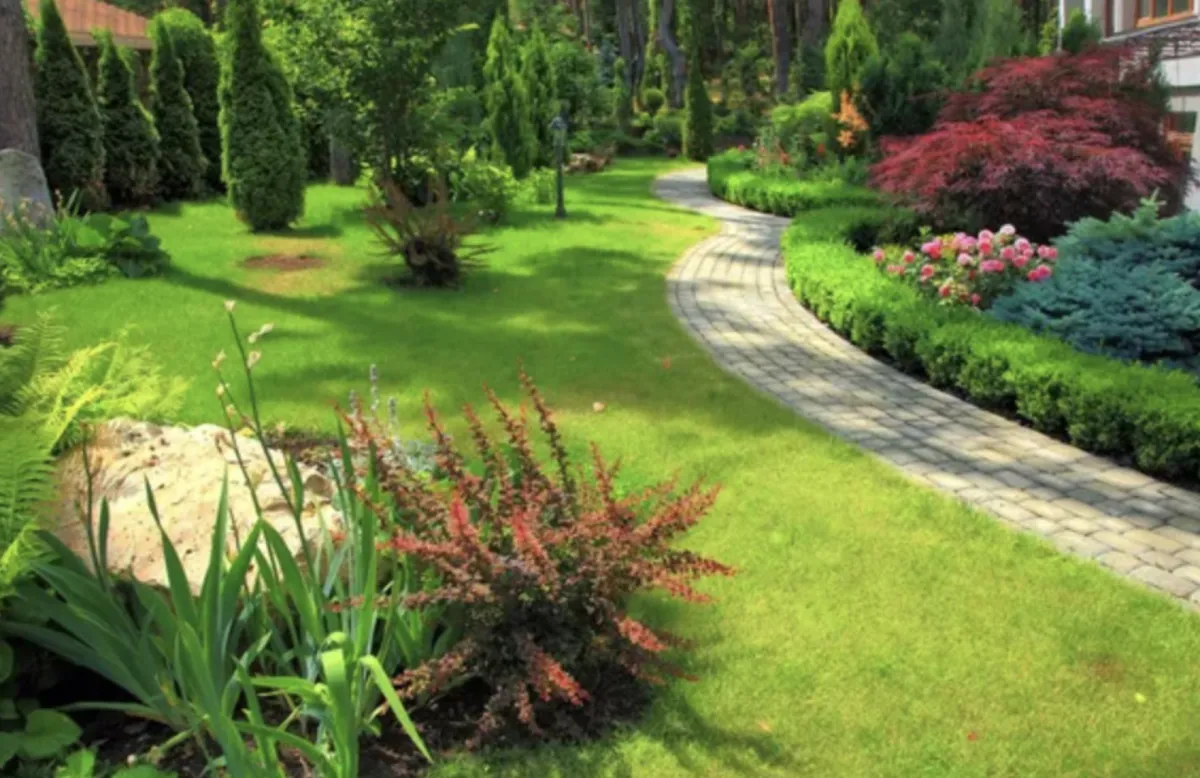
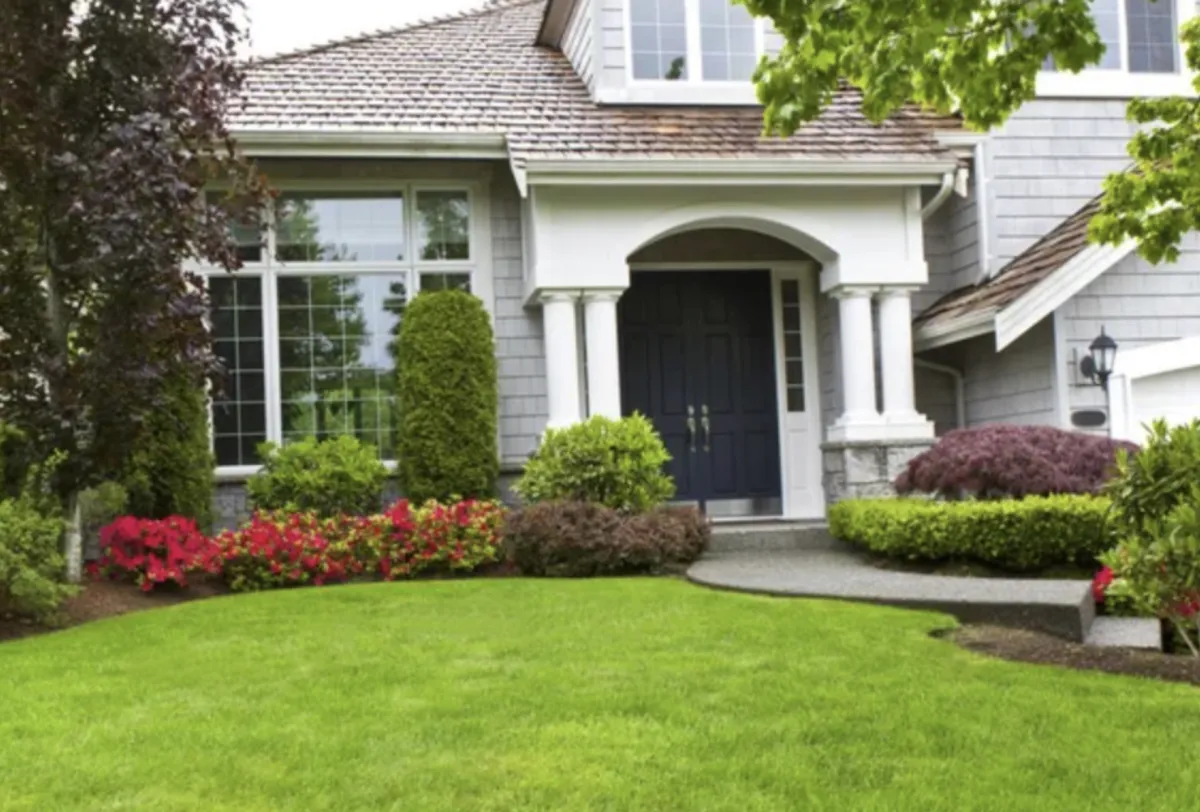
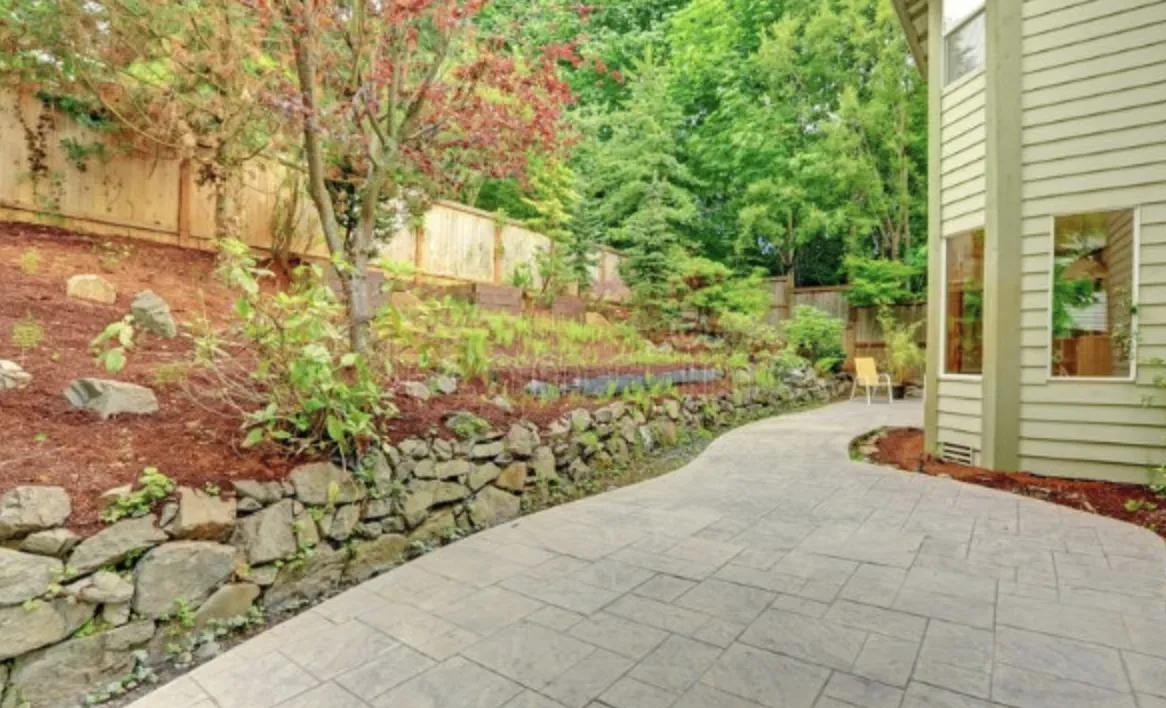

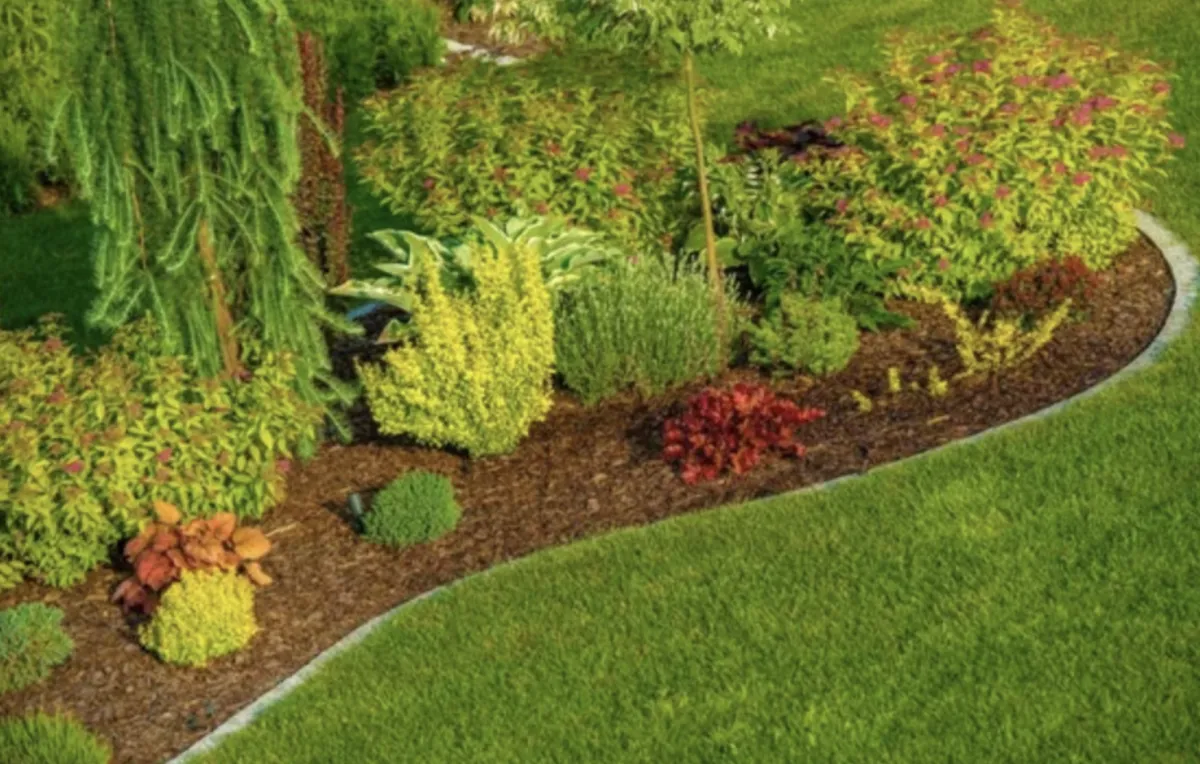

See What Our Customer Say About Us
Sarah M., Fort Worth, TX

“I can’t say enough good things about HF Landscape Design Fort Worth. They totally transformed our backyard into something out of a magazine — and they did it on time and within our budget. The team showed up early every day, cleaned up after themselves, and really listened to what we wanted. You can tell they actually care about the little details, not just getting the job done. Our neighbors keep stopping by asking who did the work — we tell everyone to call HF Landscape Design. Best decision we made for our home!”
Daniel R., Fort Worth, TX

“HF Landscape Design Fort Worth really blew us away. We had a plain front yard before, and now it looks like something you’d see in a design show. They helped pick the right plants for the Texas heat and even added lighting that makes the place glow at night. Super easy to talk to and very professional — they made the whole thing stress-free. We’d hire them again in a heartbeat.”
Megan & Tyler H., Fort Worth, TX

“Our backyard was just dirt and weeds before HF Landscape Design came in. Now it’s the spot where we spend every weekend with friends. They built a patio, added flower beds, and somehow made it all feel natural like it was always meant to be there. You can tell they love what they do — every detail was perfect. Highly recommend them to anyone in Fort Worth wanting a yard they’ll actually use.”
Get Professional Garden Design
Stop replanting gardens that fail every summer or struggling with beds requiring constant maintenance. Get professional garden design that works with Fort Worth conditions.
Call (817) 580-3329 to schedule a garden design consultation. We'll assess your property's conditions, discuss your preferences, and create gardens that thrive in North Texas.
Service Areas: Fort Worth, Tanglewood, Ridglea Hills, River Crest, Westover Hills, Berkeley, Monticello, Mistletoe Heights, and surrounding communities.
Frequently Asked Questions
What is the average cost of landscape design?
Landscape design costs in Fort Worth typically range from $2,000 to $8,000 depending on property size—project complexity—level of detail required. Simple front yard designs for smaller properties might run $1,500 to $3,000. Comprehensive landscape plans for larger properties with detailed planting plans—hardscape designs—irrigation layouts—lighting plans usually cost $5,000 to $10,000 or more. We typically credit design fees toward installation if you proceed with us for the work. Design-only services cost more since we're not recouping fees through installation. Most clients in areas like Tanglewood or Westover Hills invest in detailed designs because their properties warrant professional planning. Newer neighborhoods with simpler yards might need less extensive design work.
What does it cost for a landscape design?
Design fees depend on project scope and what you need included. Basic conceptual designs showing general layout—plant groupings—hardscape locations run $1,500 to $3,000 for typical residential properties. Detailed construction-level plans with exact plant specifications—hardscape dimensions—grading plans—irrigation zone maps cost $4,000 to $8,000 or higher for complex projects. Commercial landscape design involves additional complexity and typically costs more. We discuss your specific needs during initial consultation and provide design fee quotes based on actual scope. Design fees get credited toward installation when you hire us for the work. Fort Worth properties with challenging conditions—significant slopes—drainage issues—often need more detailed planning which affects design costs.
What is the difference between a landscape architect and a landscape designer?
Landscape architects have formal education—state licensing—ability to stamp engineering drawings for permits. They handle complex projects requiring grading engineering—structural calculations—commercial site development—regulatory compliance. Landscape designers focus on plant selection—aesthetic layout—residential design without engineering components. In Fort Worth, landscape architects are required for certain commercial projects—retaining walls over specific heights—projects needing engineered drainage solutions. Residential projects usually work fine with landscape designers unless you've got significant slope issues—major grading needs—structures requiring engineering stamps. Landscape architects cost more but bring technical expertise for complex projects. Most residential landscapes in neighborhoods like Arlington Heights or Ridglea work well with landscape designers. Larger estates or properties with serious site challenges benefit from landscape architectural services.
Why is landscape design so expensive?
Professional landscape design involves considerable time—expertise—detailed planning work. Designers spend hours on site assessment—measuring—analyzing drainage and sun patterns—researching plant options for specific conditions. Creating scaled plans requires CAD software skills—design knowledge—understanding of Fort Worth's climate and soil conditions. Good designers prevent expensive installation mistakes—plant failures—drainage problems that cost far more to fix later. You're paying for years of experience knowing what works in North Texas clay soil—which plants survive July heat—how to design irrigation zones efficiently. Design fees also cover revisions—client meetings—coordination with contractors during installation. Cheap or free designs often mean cookie-cutter plans—inexperienced designers—or design costs hidden in inflated installation prices. Professional design upfront saves money long-term by getting things right the first time.
What is the rule of 3 in landscaping?
The rule of three suggests planting in odd-numbered groups—typically three plants—creates more natural and visually appealing arrangements than even numbers. Three plants or features create triangular compositions—visual interest—balance without formal symmetry. This applies to groupings of the same plant variety or repeating design elements throughout the landscape. In Fort Worth landscapes, you might see three crape myrtles anchoring a bed—three groupings of ornamental grasses—three boulders in a natural arrangement. The rule helps avoid the static look of paired plantings or single specimens. Works for plants of various sizes—repetition of colors—hardscape feature placement. Not a strict requirement but a helpful design principle creating more dynamic landscapes. We use the rule of three alongside other design principles—proper spacing—mature size consideration—Fort Worth-appropriate plant selection.
What is a realistic landscaping budget?
Realistic budgets for Fort Worth landscape projects typically start around $10,000 for basic front yard renovations and run $20,000 to $50,000 for complete front and backyard transformations with hardscaping. Simple refreshes—new plants—mulch—irrigation repairs might cost $5,000 to $8,000. Projects including patios—retaining walls—outdoor kitchens—extensive plantings easily reach $50,000 to $100,000 or more. Budget depends on property size—existing conditions—how much hardscape you want—plant material quality and maturity. Fort Worth's clay soil often requires additional drainage work affecting costs. Established neighborhoods like Monticello with mature landscapes might need less work than new construction in Walsh Ranch starting from dirt. Quality materials and experienced installation cost more upfront but last longer and perform better in our climate.
